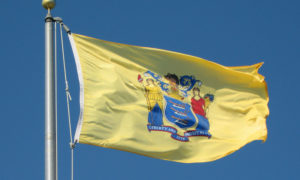With California’s recent passage of the Medicinal and Adult Use Cannabis Regulation and Safety Act (“MAUCRSA“), we finally know California will be combining its regulatory oversight of medical and adult use cannabis. We also know potential licensees no longer need to prove prior compliance with local laws to receive a state cannabis — which was the case under MCRSA, which has been repealed. This does not mean state licensees get to violate local laws. Instead, MAUCRSA lays out a sort of local vigilance program where the state notifies local governments of incoming licensees and the local governments then have to let the state know whether those licensees are complying with local cannabis laws. Local law is still king in California.
If you’ve been following the situation in Los Angeles, you know LA has an embattled history with its medical marijuana dispensaries. In addition to other enforcement measures, one of the City’s biggest battles has been enforcing Proposition D (a mere immunity-from-prosecution ordinance), which was essentially replaced this past March with ballot initiative Measure M that will finally regulate cannabis businesses within the City’s borders. Among other directives, Measure M ensured that Proposition D-compliant dispensary collectives would receive “priority” status for whatever local approval mechanism the City would design under Measure M. Despite the passage of Measure M, the question remained as to whether the City would increase the number of dispensaries and how exactly the City would regulate its cannabis operators.
Last month, Los Angeles released proposed Measure M regulations. Under those regulations (which are in a 60-day comment period), dispensaries that can prove “substantial” compliance with Proposition D will receive priority processing in the first round of the City’s issuance of “certificates of approval.” Though there has already been a fair amount of stakeholder dissent surrounding the use of certificates of approval and backlash against the proposal of a non-retail registry for cultivators and manufacturers, what has not been discussed as much is whether Proposition D-compliant dispensaries can essentially “flip,” or partner with third parties on, one or more of their certificates of approval (which include delivery and cultivation).
Even before institution of Measure M, folks were looking to “buy” Proposition D-compliant dispensaries, but ever more so now that owning such a dispensary gets priority processing from the City and because L.A. may not actually increase its number of dispensaries based on some restrictions in the proposed Measure M regulations.
If you are looking to get in on a Los Angeles cannabis dispensary you need to be thinking about due diligence. Due diligence on Los Angeles dispensaries is difficult because California’s existing MMJ laws under Prop. 215 do not require much operational or corporate accountability or tracking on either the state or local level. Also, because most of these entities are non-profits, there’s no equity to buy or sell. So you need to check the entity’s bylaws to make sure you can either take over the entity by paying a membership fee or that you can do some kind of director swap with an attendant asset purchase and that the entity will not need to give notice to thousands of patient members for you to do so. Given the unregulated nature of existing operators on a state level, you also need to make sure that the dispensary has been paying its taxes to the IRS (under 280e) and that it has been paying the Board of Equalization. Lastly, many Los Angeles dispensaries are not compliant with Proposition D and this too could cause you all sorts of problems. What makes for a compliant Proposition D dispensary? This is not entirely clear. Some believe that being on the 2013 City-issued list (which shows 134 dispensaries) proves compliance. Others believe the June 2017 map of dispensariesissued by the City Controller (which shows 139 dispensaries) is the proof you need. Proposition D says that to prove compliance, a Los Angeles dispensary must show the following:





































